A visit to the Van Gogh Museum in Amsterdam...
While on a short trip to Amsterdam, I visited the Van Gogh Museum. It's a must-see, especially if one appreciates Van Gogh's works of art and related art/artists from his era. The museum is quite popular, so it can be a bit busy but it is worth it. I didn't have to wait in line very long as I had bought an I Amsterdam card that gives free access to dozens of musem and unlimited travel on public transport within Amsterdam.
The Van Gogh Museum has 4 stories, and is light and airy. It has a number of Van Gogh's works though some of them are on loan and/or located elsewhere in other museums around the world. I started from the top floor and worked my way down.
There are several paintings that that I enjoyed, and I've provided a the paintings themselves along with little bit of commentary. I am not an expert on art, nor have I studied it, but I do appreciate Van Gogh's works and see full value in the need for museums to exchange works and host exhibitions. It's great to allow yourself time to 'get lost' in the paintings and let your imagination wander.
All images are owned by and taken directly from the Van Gogh Museum, Amsterdam (Vincent van Gogh Foundation) which allows people to download non-copyrighted images and use them for non-commercial purposes. Needless to say, I don't aim or want to profit from displaying these images!
~ Floor 3 ~
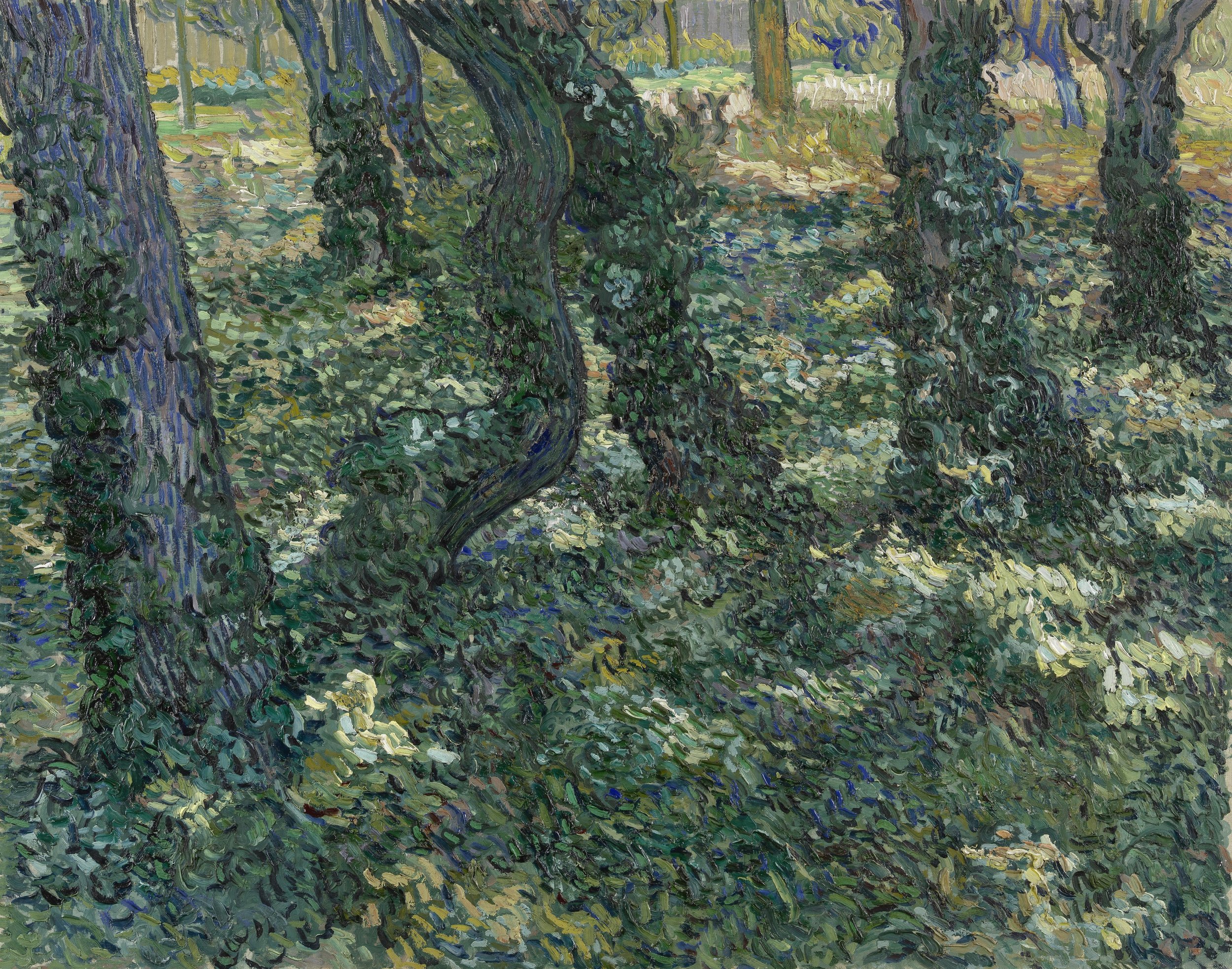 Undergrowth - 1889 - This one is particularly colorful in terms of dark colors such as greens, blues and also highlights of yellow and white here and there. It can really draw you in to the image and let the imagination construct into reality what is painted.
Undergrowth - 1889 - This one is particularly colorful in terms of dark colors such as greens, blues and also highlights of yellow and white here and there. It can really draw you in to the image and let the imagination construct into reality what is painted.
 Irises - 1890 - This one is very colorful - lots of yellows from brighter to darker which contrast with the various blue hues of the irises themselves. The painting sort of shimmers slightly, and is relaxing and pleasing to the eye (mine at least!).
Irises - 1890 - This one is very colorful - lots of yellows from brighter to darker which contrast with the various blue hues of the irises themselves. The painting sort of shimmers slightly, and is relaxing and pleasing to the eye (mine at least!).
The sheepshearer, the peasant woman bruising flax and the reaper (after Millet) - 1889 - These all employ a set of contrasting blues and yellows, which makes for a relaxing set. They portray farm workers - but we don't actually see the faces of those portrayed. One can imagine what it is like to be within the images if one only gazes for a few moments and sinks into each image. Relaxing.
I've just read that Van Gogh actually made prints and then had to imagine the colors that would appear on the basis of the prints. He also preferred subjects that he could see...
[gallery ids="882,883,884" type="rectangular"]
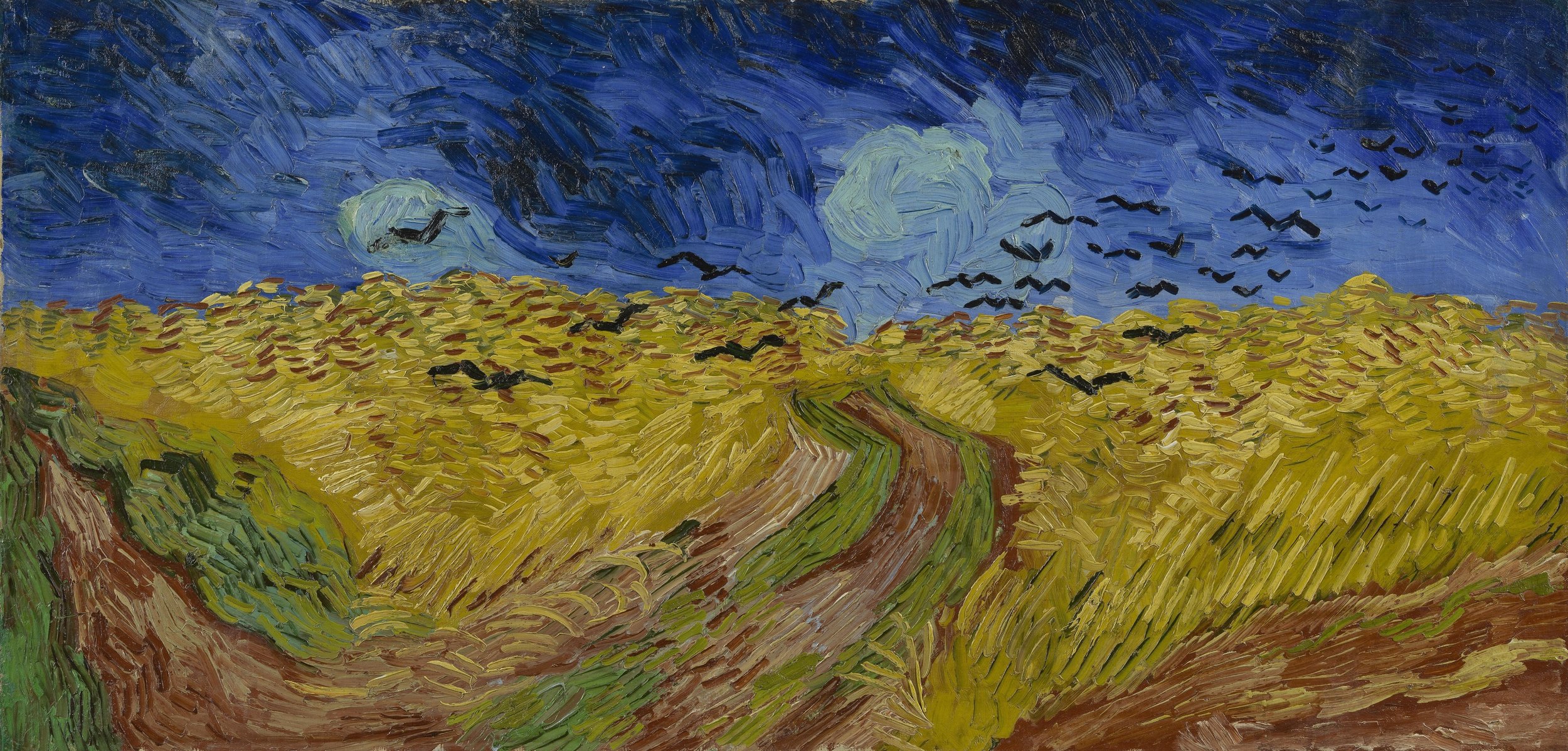 Wheatfield with crows - 1890 - This is another example of Van Gogh's characteristic style. He uses slightly broad strokes that almost look like he painted with his fingers. The colors again that draw me to the painting are a range of yellows, blues. Green and brown are also prominent though less so. One can imagine standing in a field of wheat as a murder of crows springs from the ground and flies into the sky...
Wheatfield with crows - 1890 - This is another example of Van Gogh's characteristic style. He uses slightly broad strokes that almost look like he painted with his fingers. The colors again that draw me to the painting are a range of yellows, blues. Green and brown are also prominent though less so. One can imagine standing in a field of wheat as a murder of crows springs from the ground and flies into the sky...
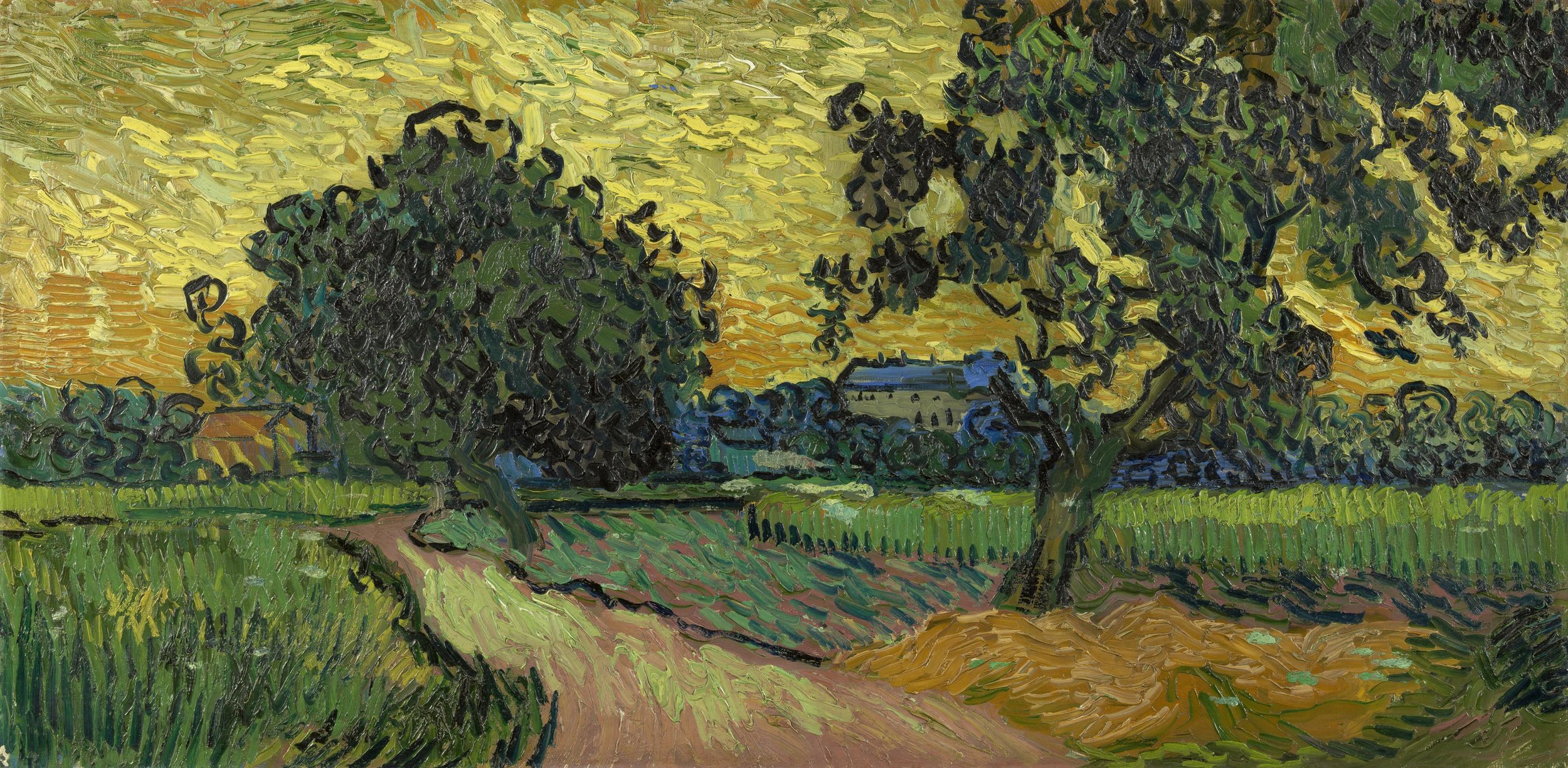 Landscape at twilight - 1890 - In this image twilight is setting over a manner or farm. Yellows, orange and almost gold is prominent in the sky. The other major colors are a range of greens for the grass and trees. The contrast is striking, like most of Van Gogh's other similar works that use these types of colors.
Landscape at twilight - 1890 - In this image twilight is setting over a manner or farm. Yellows, orange and almost gold is prominent in the sky. The other major colors are a range of greens for the grass and trees. The contrast is striking, like most of Van Gogh's other similar works that use these types of colors.
~ Floor 2 ~
 The yellow house (the street) - 1888 - Van Gogh painted his own house (of course!). Again there is a clear contrast to what's on the ground compared with what's in the sky as far as colors. The sky is a striking blue - or cobalt as the description reads. The building and grounds take on various hues of yellow and almost a green-grey. Vivid.
The yellow house (the street) - 1888 - Van Gogh painted his own house (of course!). Again there is a clear contrast to what's on the ground compared with what's in the sky as far as colors. The sky is a striking blue - or cobalt as the description reads. The building and grounds take on various hues of yellow and almost a green-grey. Vivid.
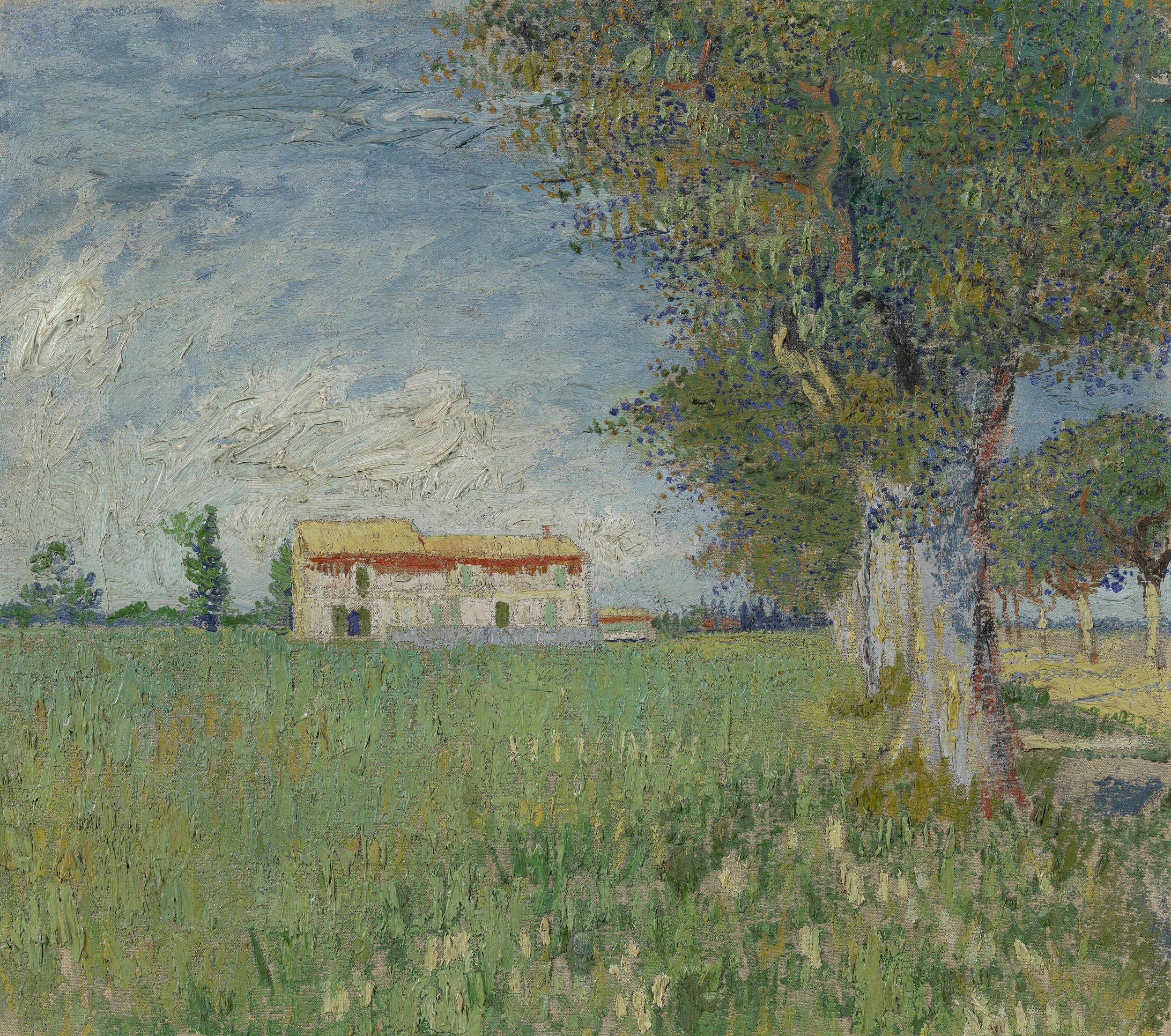 Farmhouse in a wheatfield - 1888 - This painting looks different in terms of how Van Gogh used his brushes as there aren't broad strokes. These are almost entirely absent. There are a lot of smaller strokes uses for the grass, tree trunk and house and clouds, but many dots used to fill out the tree - almost as if it were springtime...
Farmhouse in a wheatfield - 1888 - This painting looks different in terms of how Van Gogh used his brushes as there aren't broad strokes. These are almost entirely absent. There are a lot of smaller strokes uses for the grass, tree trunk and house and clouds, but many dots used to fill out the tree - almost as if it were springtime...
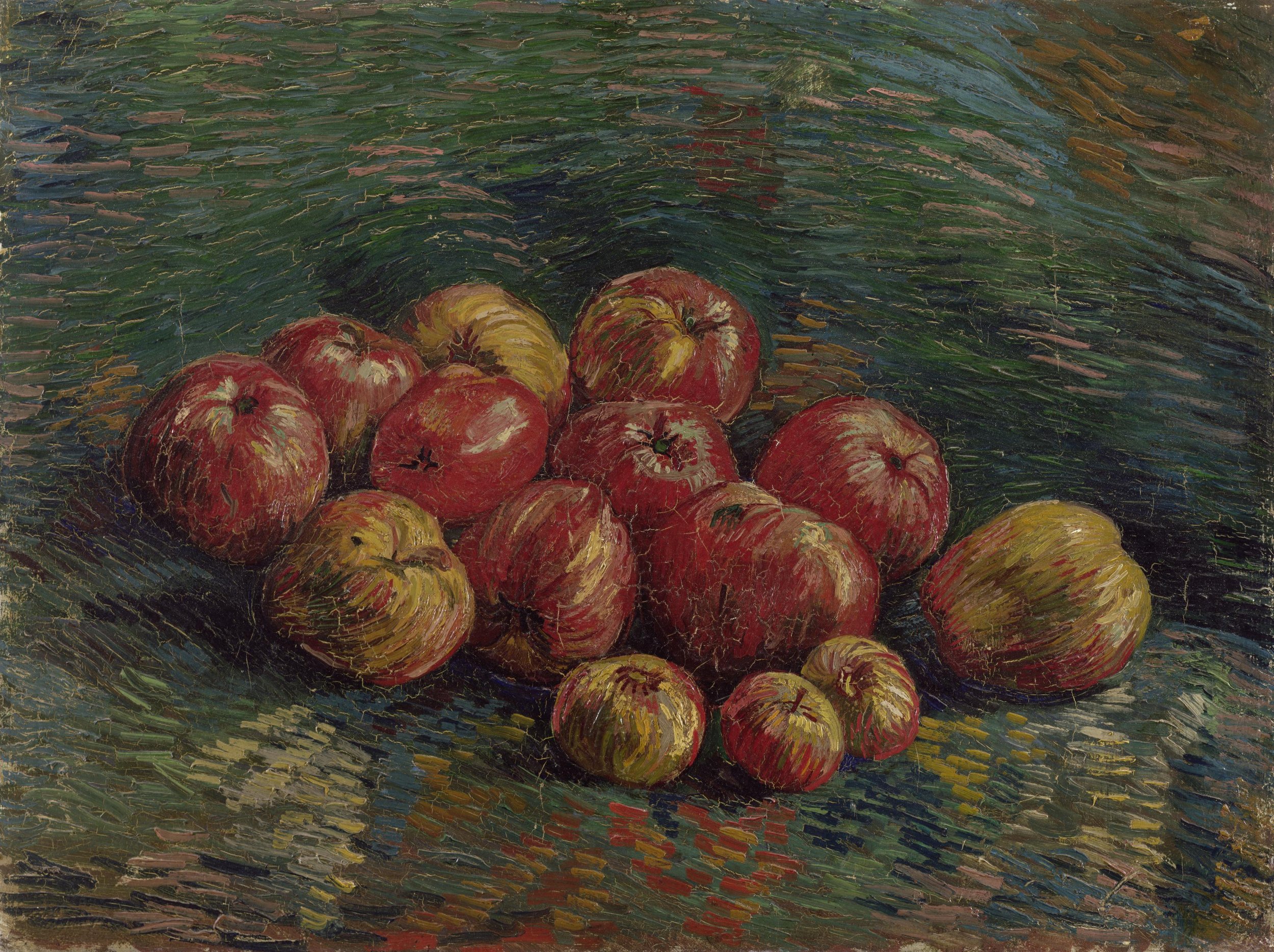 Apples - 1887 - This painting is different from previous ones that I'd seen. Here there are red and yellowish hues surrounded by greens and blues. Again Van Gogh puts forth contrasting colors! I love it!
Apples - 1887 - This painting is different from previous ones that I'd seen. Here there are red and yellowish hues surrounded by greens and blues. Again Van Gogh puts forth contrasting colors! I love it!
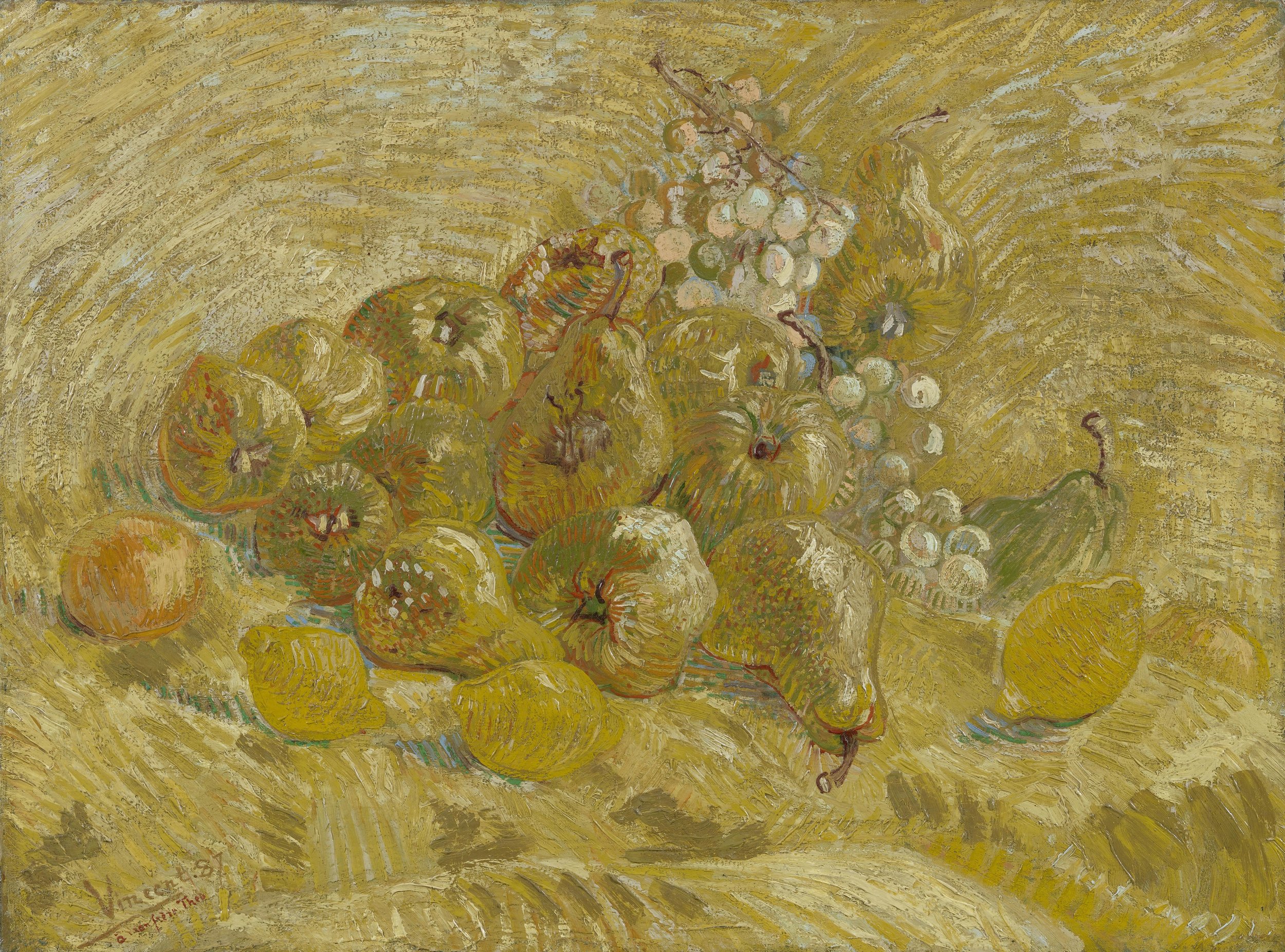 Quinces, lemons, pears and grapes - 1887 - Here Van Gogh employs what the image description says is a "tonal" effect by using various shades of yellow for the different fruit, and even background. The entire image almost comes off as golden. Pleasing to the eye and it draws you in slightly.
Quinces, lemons, pears and grapes - 1887 - Here Van Gogh employs what the image description says is a "tonal" effect by using various shades of yellow for the different fruit, and even background. The entire image almost comes off as golden. Pleasing to the eye and it draws you in slightly.
~ Floor 1 ~
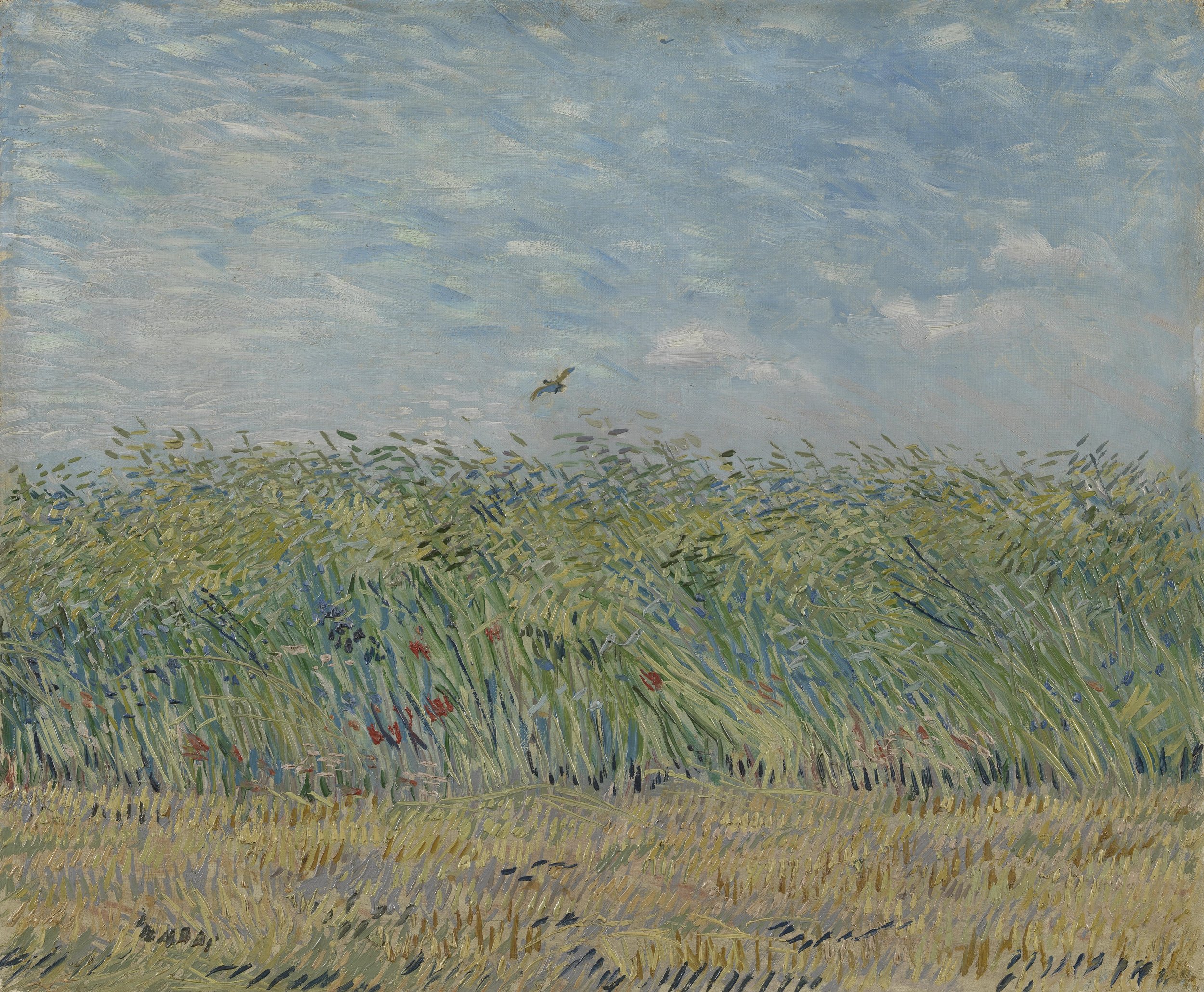 Wheatfield with partridge - 1887 - The strokes in this painting vary between the sky, which has broader strokes, to the wheatfield itself, which consists of finer strokes of varying length. A mix of blues and whites paint the sky while varied greens and yellows are used for the wheatfield, which also has spots of red, blues and greys. One museum visitor notes how there's a lot of movement in the painting and it creates a sense of warmth. It's almost like a warm summery day.
Wheatfield with partridge - 1887 - The strokes in this painting vary between the sky, which has broader strokes, to the wheatfield itself, which consists of finer strokes of varying length. A mix of blues and whites paint the sky while varied greens and yellows are used for the wheatfield, which also has spots of red, blues and greys. One museum visitor notes how there's a lot of movement in the painting and it creates a sense of warmth. It's almost like a warm summery day.
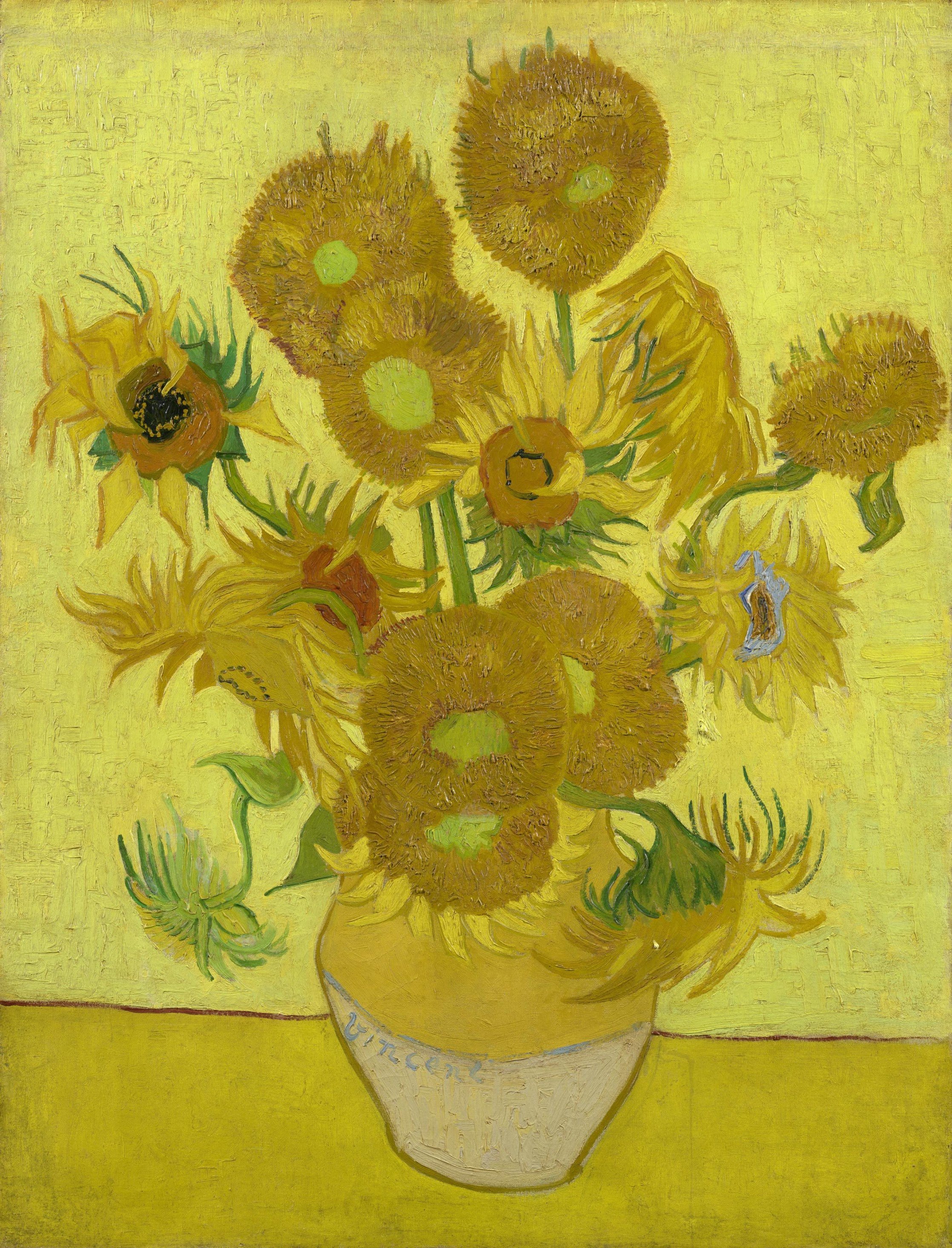 Sunflowers - 1889 - This painting has a lot of yellow, gold and related colors that are used to portray sunflowers. The painting, however, isn't nearly as vivid as some of his other works. This one appears a little dull in some ways, and it doesn't appear to strike me or draw me into it in a significant way as the other paintings have.
Sunflowers - 1889 - This painting has a lot of yellow, gold and related colors that are used to portray sunflowers. The painting, however, isn't nearly as vivid as some of his other works. This one appears a little dull in some ways, and it doesn't appear to strike me or draw me into it in a significant way as the other paintings have.
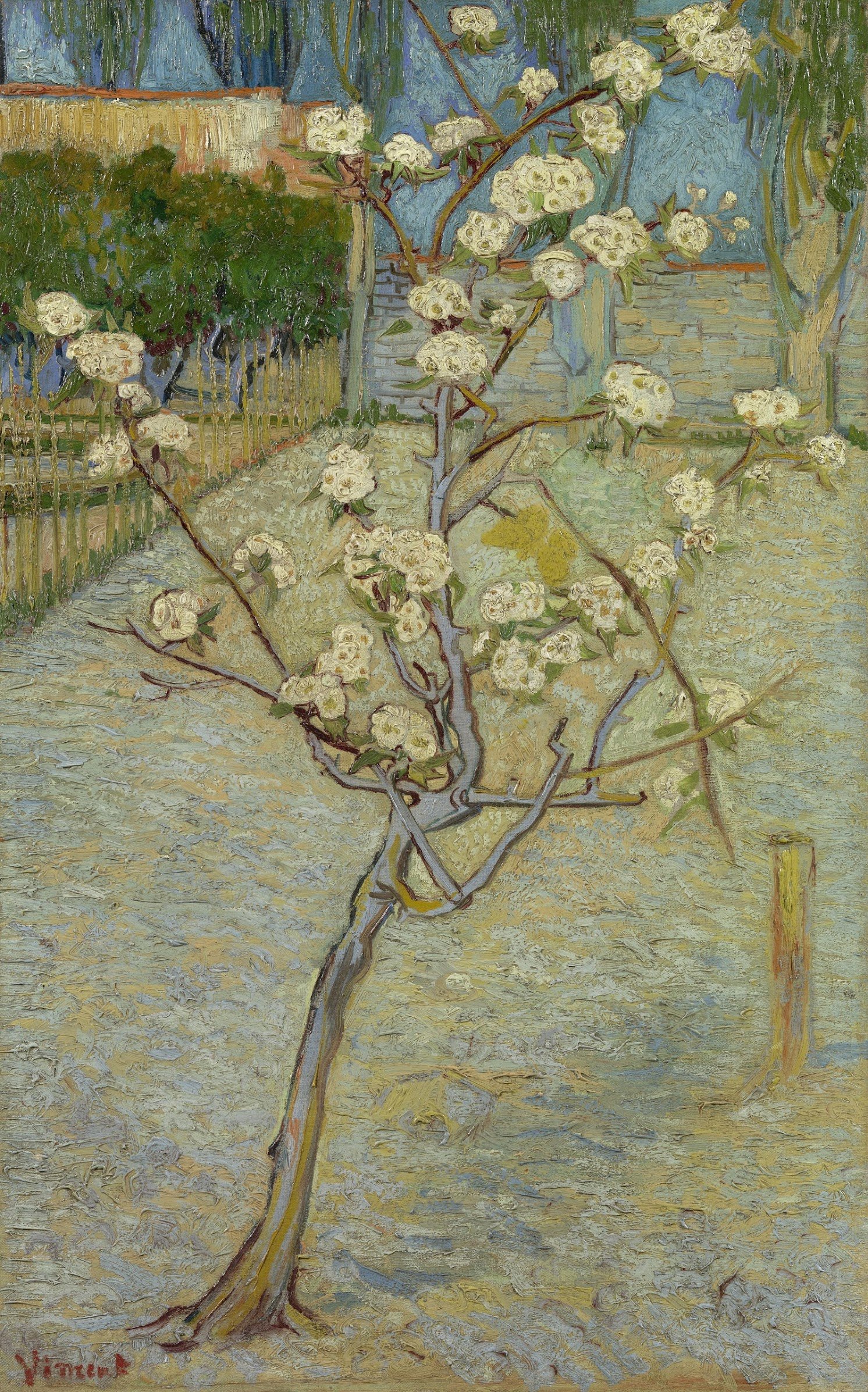 Small pear tree in blossom - 1888 - Here I can see the contrast that I enjoy observing and gazing into in several of Van Gogh's works. Here, though, the contrast is created by greyish blues mixed with pale yellows and whites. It has a calming effect.
Small pear tree in blossom - 1888 - Here I can see the contrast that I enjoy observing and gazing into in several of Van Gogh's works. Here, though, the contrast is created by greyish blues mixed with pale yellows and whites. It has a calming effect.
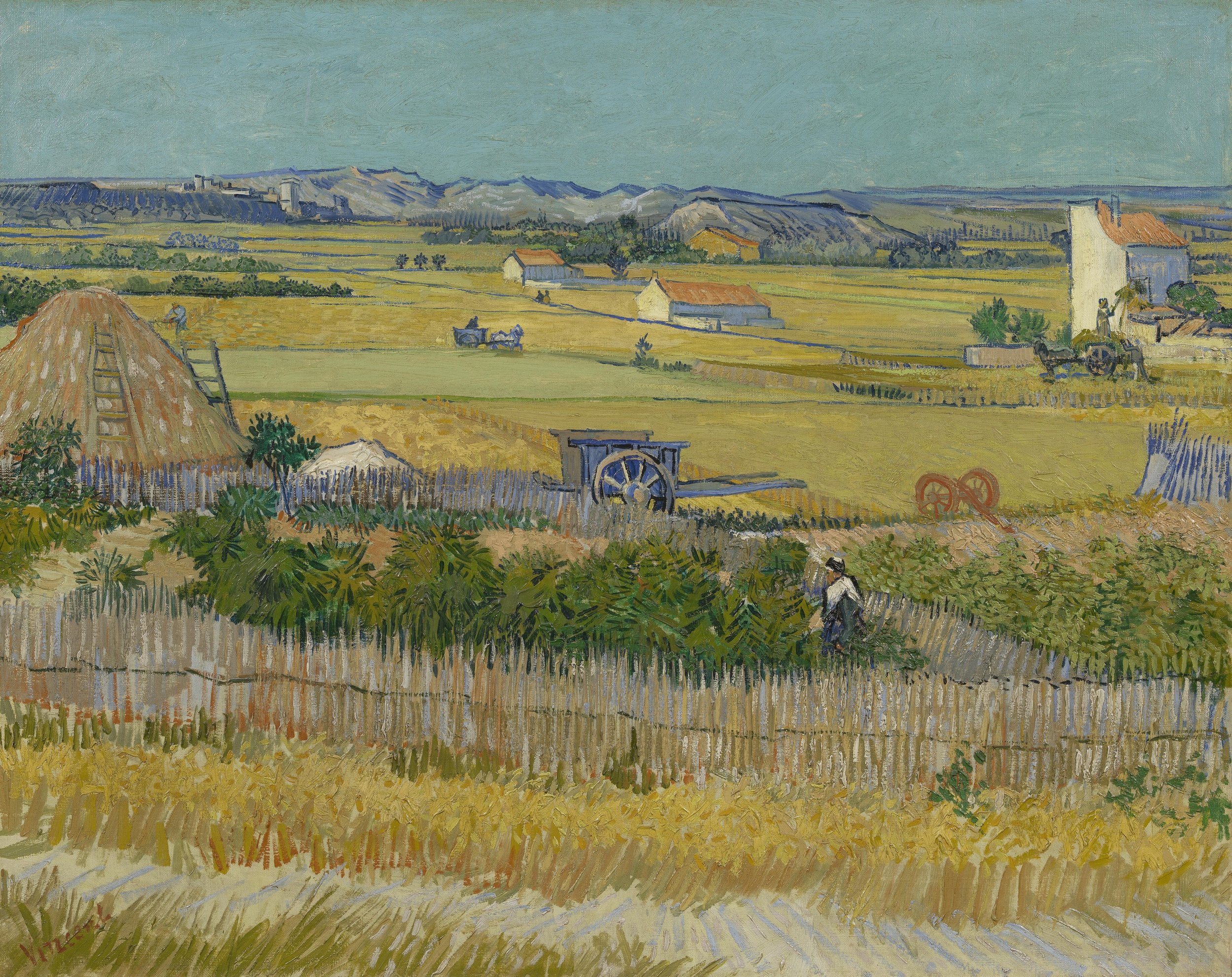 The harvest - 1888 - This almost panoramic painting looks at a field with farmhouses in the mid background and hills in the far background. Van Gogh himself enjoyed this particular work, which uses a series of contrasting colors that form Van Gogh's signature style - yellows/gold, greens and blues all in some way or another conveyed to the observer. The painting captivates me because there is so much to observe and enjoy, and get lost in.
The harvest - 1888 - This almost panoramic painting looks at a field with farmhouses in the mid background and hills in the far background. Van Gogh himself enjoyed this particular work, which uses a series of contrasting colors that form Van Gogh's signature style - yellows/gold, greens and blues all in some way or another conveyed to the observer. The painting captivates me because there is so much to observe and enjoy, and get lost in.
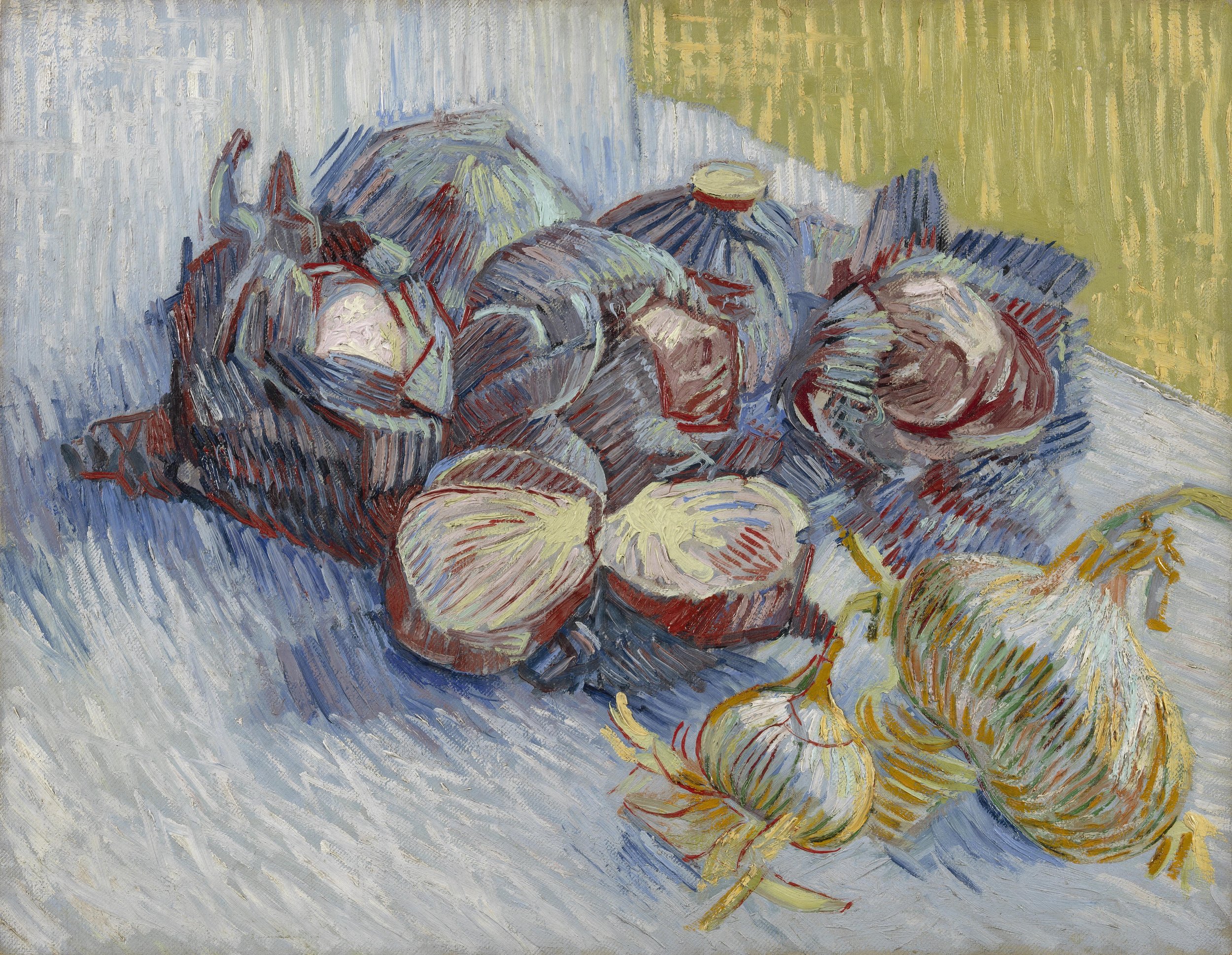 Red cabbages and onions - 1887 - This painting is beautiful - the colors catch my eyes and make me get lost within the image itself. The contrast is particularly interesting and striking to me.
Red cabbages and onions - 1887 - This painting is beautiful - the colors catch my eyes and make me get lost within the image itself. The contrast is particularly interesting and striking to me.